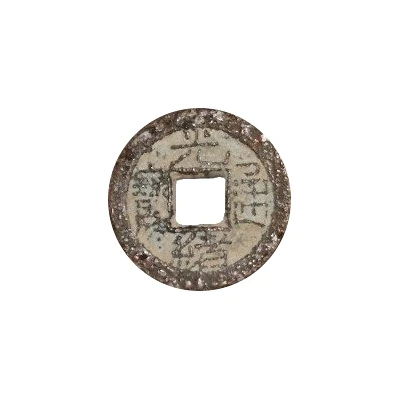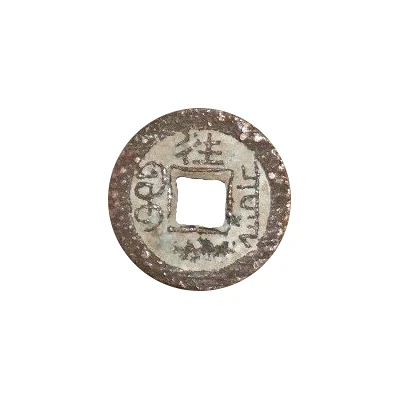


© bbybugs (CC BY-NC-SA)
1 Cash - Guangxu Tongbao; Boo-chiowan; with ideogram ND
| Brass | - | 21 mm |
| Issuer | Empire of China |
|---|---|
| Emperor | Qing dynasty › Guangxu (光緒帝) (1875-1908) |
| Type | Standard circulation coin |
| Years | 1898-1899 |
| Value | 1 Cash |
| Currency | Cash (621-1912) |
| Composition | Brass |
| Diameter | 21 mm |
| Shape | Round with a square hole |
| Technique | Cast |
| Orientation | Medal alignment ↑↑ |
| Demonetized | Yes |
| Updated | 2024-10-04 |
| Numista | N#54160 |
|---|---|
| Rarity index | 83% |
Reverse
Two Manchu words (read vertically) separated by the hole, all with one Chinese ideogram above.
Script: Mongolian / Manchu
Lettering:
往
ᠪᠣᠣ ᠴᡳᠣᠸᠠᠨ
Translation: Wang / Boo-chiowan
Edge
Plain
Comment
At the start of 1898, the president of the Board of Revenue introduced a new control on the coins: one character from the Qian Zi Wen (Thousand Character Classic; an ancient poem written using 1,000 different ideograms) would be added to the reverse, changing each quarter of the year.The system was meant so one could tell when the coin was cast; however, the ideograms used are not consecutive and seem to have been chosen at random, so the exact time each ideogram was used is currently unknown.
Hartill does not give a new number for the different privy marks, but reports that each privy mark can be found on these coins.
DocTongHead
DocTongDots
DocBooProt
Interesting fact
One interesting fact about the Standard circulation coin 1 Cash - Guangxu (Tongbao; Boo-chiowan; with ideogram) ND (1898-1899) from Empire of China made of Brass is that it features a unique ideogram on its reverse side. The ideogram, which resembles a stylized "寶" character, is actually a combination of the Chinese characters "寶" (bǎo) meaning "precious" or "treasure," and " chiowan" (or "貨貨幣" in traditional Chinese) meaning "currency" or "money." This ideogram was specifically designed for the Guangxu era (1875-1908) coinage and was meant to symbolize the coin's value and authenticity.